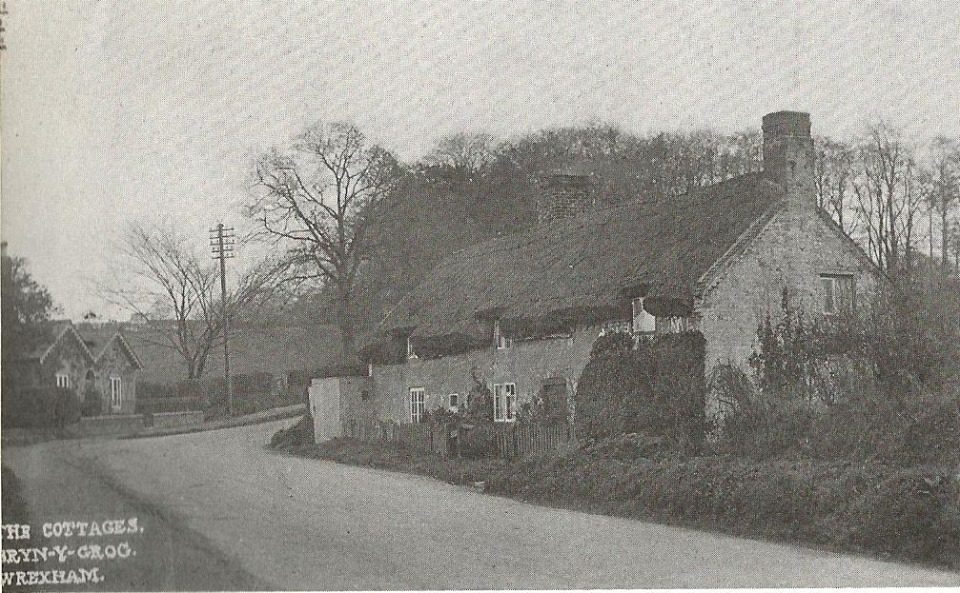Marchwiel as a settlement dates to at least the thirteenth century and probably much earlier. A church is recorded on the site of the parish church of St Marcellus and St Deiniol from 1254, although it was entirely rebuilt in 1778. Marchwiel Old Hall was thought to originally have been a medieval moated site, but the Ordnance Survey believed the supposed moat to only have been a large drainage ditch. The Llwyn Onn Mill, on the opposite side of the Clywedog, may have originated as one of the first paper mills in this area. It seems to have been in operation by 1797 and may have started in the seventeenth century. Wire was also being produced at Llwyn Onn from before the Napoleonic Wars.
In the Second World War an ordnance factory, built in 1940, covered 1330 acres to the north of the river. This was equipped with its own railway sidings, roads, water supply, electricity and acid-producing plant. The branch line to the factory joined the Wrexham and Ellesmere line just west of Sesswick Holt and there was a station on that branch line near Five Fords Farm and a gate to the factory site also located there. Five Fords Farm dates from the late seventeenth century and had a three-storey brick-built farmhouse. The house was part of the Wynnstay Estate and was demolished in 1973.
The road from Wrexham to Whitchurch, passing through Marchwiel, became an important eighteenth-century turnpike. By 1788 a post coach was running three times a week between Chester and Shrewsbury through Wrexham and Ellesmere. There was a highway robbery in Marchwiel in 1822, despite the establishment of a local police force for Wrexham in 1819 specifically to counter such activity.
The railway arrived in the form of a Cambrian Railways line, the Wrexham and Ellesmere Railway. The act of parliament allowing its construction was passed in 1885, but construction did not actually start until 1892, and it was completed by 1895. It was run by Cambrian Railways until 1923 when it passed to Great Western Railways. Passenger trains ceased in 1962, but some private sidings continued in use up to 1973, including the Maelor Gas works sidings at Marchwiel. Marchwiel Station had two platforms, a passing loop, sidings to a cattle pen, an uncanopied goods yard and a coal yard with a weigh bridge.

























